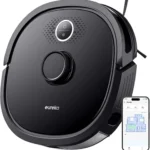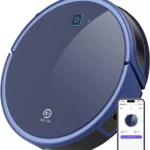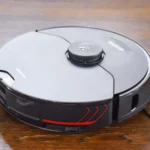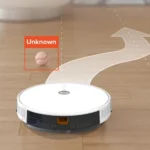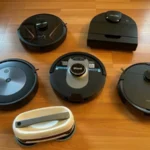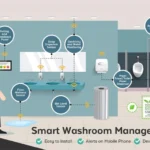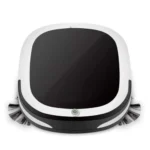Vacuum cleaners have come a long way since their inception decades ago. The latest advancements in vacuum cleaner charging technology are proof that innovation in this field is not slowing down anytime soon. The rapid development of charging technology has led to faster charging, longer battery life, more efficient energy usage, minimal user intervention, and smarter connectivity. With the latest developments in vacuum cleaner charging technology, cleaning has become easier and more convenient than ever before. In this article, we will explore the latest advancements in vacuum cleaner charging technology, as well as the future of this technology. So sit back, relax, and let’s delve into the exciting world of vacuum cleaner charging technology.
Advantages of Innovative Charging Technology

Given how crucial vacuum cleaners are in keeping our homes clean and ensuring a healthy environment, there’s no wondering why advancements in vacuum cleaner technology have continued to gain widespread attention. One particular area that has seen remarkable progress is the charging technology responsible for keeping our vacuums working optimally. Innovative charging technology has ushered in numerous benefits that significantly improve the user’s overall experience. From faster charging to smarter connectivity, longer battery life to minimal user intervention, the advantages are there for all to see. In the following sections, we’ll delve deeper into each of these advantages and explore how they can improve your vacuuming experience. For instance, if you’re curious about extending your smart vacuum battery’s life, click here to learn more.
1. Faster Charging
Vacuum cleaners are an essential appliance for homeowners. However, the charging time has always been a primary concern for users. Before the latest advancements in vacuum cleaner charging technology, most vacuum cleaners took hours to charge fully. With faster charging technology, charging time has been reduced to a fraction of the time it used to take.
The latest vacuum cleaners with advanced charging technology take as little as one hour to charge fully. For instance, the Dyson Cyclone V10 Absolute comes with a high-performance battery that charges fully in just 3.5 hours, and once fully charged, it can last up to 60 minutes. Additionally, the Shark ION P50 Cordless Upright Vacuum charges within three hours and provides users with up to 50 minutes of run time.
One of the reasons for the faster charging time is the use of modern battery technology, such as lithium-ion batteries. These types of batteries are common in high-end models due to their ability to charge faster than traditional batteries. Besides, vacuum cleaners that can charge faster are usually equipped with rapid charging technology that can fill the battery to a certain percentage (usually 80%) in less time than it takes to charge fully.
Another way that vacuum cleaner manufacturers are achieving faster charging time is by improving the efficiency of the charging process. Advanced vacuums come with circuits that manage the charging speed and prevent overcharging, which is one of the primary causes of battery damage. Keeping the battery safe and charging it quickly is essential for prolonging the battery life and ensuring overall vacuum cleaner optimal performance.
In summary, faster charging technology is beneficial to vacuum cleaner users. It saves them time and ensures uninterrupted use of the vacuum cleaner. Fast-charging smart vacuums are the future of cleaning, and their integration with smart home systems improves overall user experience. Vacuum cleaner manufacturers are constantly researching and developing battery charging solutions that improve both the charging speed and battery performance, while ensuring safe and smart vacuum battery storage.
2. Longer Battery Life
Longer battery life is a major advantage of the latest innovations in vacuum cleaner charging technology. Vacuum cleaners with longer battery life will require less frequent charging and provide more convenience to users, especially those with larger homes or more significant cleaning needs.
One way in which vacuum cleaner manufacturers have addressed this concern is by looking at the type of battery used in these appliances. Lithium-ion batteries, for example, provide better performance, longer life, and faster charging times than other types of batteries. In addition to using high-quality batteries, manufacturers are also developing advanced battery management systems to better manage and extend the life of these batteries.
Here are some of the ways in which the latest charging technology contributes to longer battery life:
| Features | How it Helps Increase Battery Life |
| Smart Charging | The vacuum cleaner only consumes the necessary amount of energy needed to charge the battery, preventing overcharging or overheating, which can shorten the battery’s lifespan. |
| Battery Memory Reset Function | This function ensures that the battery is charged to its full capacity at every charge cycle, eliminating the memory effect, which can shorten the battery life. |
| Fast Charging | With fast-charging technology, a vacuum cleaner can charge its battery quickly, allowing the user to keep cleaning for longer without having to interrupt the cleaning process for too long. |
| Safe Battery Storage | Manufacturers are developing various safe smart storage technologies that can help prevent battery damage caused by overcharging, overheating, or any other factor that could potentially shorten the lifespan of the battery. |
| Smart Home Integration | Some vacuum cleaners can be connected to smart home systems that can detect when the user is not at home and suspend charging until the user returns. This means the battery will not be overcharged, which can reduce its lifespan. |
Improving battery life is essential if vacuum cleaners become more complex and include features such as mapping, self-driving, and more. Users will expect these devices to run reliably and efficiently for long periods, which makes battery life a crucial factor in their purchase decision.
While longer battery life is already a major advantage of innovative charging technology, manufacturers are expected to make even more progress in coming years. In the next section, we will look at some of the newest developments in vacuum cleaner charging technology and what they might mean for the future of cleaning appliances.
[Link to /safe-smart-vac-battery-storage/ for more information on safe and smart vacuum battery storage]3. More Efficient Use of Energy
One of the biggest advantages of the latest advancements in vacuum cleaner charging technology is the ability to make more efficient use of energy. This is achieved through a variety of methods, including:
1. Battery Optimization: One way that vacuum cleaner charging technology is becoming more energy-efficient is through battery optimization. Manufacturers are developing better batteries that can store more energy, provide longer run times, and recharge more quickly. These batteries also have features that prevent overcharging, which is a common cause of reduced battery life.
2. Energy-Star Ratings: Another way that vacuum cleaner manufacturers are making more efficient use of energy is by ensuring that their products meet Energy Star ratings. Energy Star is a program that identifies products that meet strict energy efficiency guidelines. Vacuum cleaners that are Energy Star certified use less energy and, therefore, save homeowners money on their energy bills.
3. Advanced Charging Algorithms: Vacuum cleaner manufacturers are using advanced charging algorithms to ensure that their products charge more efficiently. These algorithms help regulate the charging process to minimize energy waste and ensure that the vacuum’s battery is charged to its optimal level.
4. Smart Home Integration: Vacuum cleaners that are compatible with smart home technology can also help make more efficient use of energy. With smart home integration, the vacuum cleaner can be programmed to run only when necessary, thereby saving energy. Additionally, some vacuum cleaners have features that allow them to detect when they are low on battery power and return to their charging station on their own.
These energy-efficient advancements in vacuum cleaner charging technology are not only environmentally friendly, but they also save homeowners money. With features like fast charging, smart vacuum cleaners, and energy-efficient batteries, vacuum cleaners are becoming more and more efficient. To learn more about fast-charging smart vacuums or smart home integration and vacuum battery life, visit fast-charging-smart-vacuum or smart-home-integration-vacuum-battery-life.
4. Minimal User Intervention
One of the most significant advantages of the latest advancements in vacuum cleaner charging technology is the minimal user intervention required for the charging process. With traditional charging methods, users had to manually connect the vacuum cleaner to a power outlet, and often, the battery took several hours to charge fully. But now, the newer charging technologies have eliminated this hassle, saving time and effort for the users.
Here are some ways vacuum cleaner charging technology requires minimal user intervention:
- Wireless Charging: With wireless charging, users don’t need to connect their vacuum cleaner to any cable or port physically. The charging process begins automatically as soon as the vacuum cleaner is placed on its charging pad. The user can walk away and come back to find the vacuum cleaner fully charged and ready to use.
- Self-Charging Technology: Some advanced vacuum cleaners come with self-charging technology, where the device automatically returns to its charging dock when the battery level is low. This feature eliminates the need for users to locate their vacuum cleaner, connect it to a power outlet, and then wait for the battery to charge fully.
- Intelligent Scheduling: Many latest vacuum cleaners come with advanced scheduling features, where users can set their preferred charging times or cleaning schedule. The vacuum cleaner will automatically charge itself at the scheduled time, such as when the user is away from home or sleeping. This feature reduces the need for manual user intervention and ensures that the vacuum cleaner is always fully charged when the user needs it.
- Auto-Docking and Self-Emptying: Some robotic vacuum cleaners come equipped with auto-docking and self-emptying features. These devices will return to the charging dock automatically, and the docking station will empty the dustbin into the user’s garbage can. With this feature, users don’t need to empty the dustbin regularly or even worry about the vacuum cleaner’s charging status, as it takes care of itself.
The minimal user intervention feature in vacuum cleaner charging technology is incredibly useful, as it saves time and effort for users. Plus, with the latest advancements, users can enjoy uninterrupted vacuum cleaning, without the need for manual charging or docking, leading to better cleaning results and a more efficient use of energy.
5. Smarter Connectivity
One of the most significant advancements in vacuum cleaner technology is the introduction of smarter connectivity. In simpler terms, this means that you can connect your vacuum cleaner to other smart devices in your home, such as your smartphone or virtual assistant, using Bluetooth or Wi-Fi.
Here are some ways that smarter connectivity has revolutionized vacuum cleaning:
- Remote Control: You can now control your vacuum cleaner from your smartphone or virtual assistant. This means that you can start or stop cleaning, change the cleaning mode, or adjust the suction power without having to be physically present.
- Voice Control: In addition to remote control, some vacuum cleaners now come with voice control capabilities. This means that you can give voice commands to your virtual assistant to start or stop cleaning, and it will relay the command to your vacuum cleaner.
- Real-Time Monitoring: Some vacuum cleaners with smarter connectivity now come with a companion app that allows you to monitor its cleaning progress in real-time. You can see the areas that have been cleaned and the areas that are still pending. This is particularly useful when you are away from home and want to ensure that your cleaner isn’t stuck or has finished cleaning.
- Notifications: The app on your smartphone can send you notifications when your vacuum cleaner has finished cleaning or if it encounters any issues during cleaning, such as low battery or full dustbin.
- Integration with Smart Home Systems: With smarter connectivity, vacuum cleaners can now be integrated with other smart home systems, such as your smart thermostat or security system. This means that when your vacuum cleaner starts cleaning, it can trigger a response from other smart devices in your home, such as turning off the heating or deactivating the security system.
Smarter connectivity has made vacuum cleaning smarter, more efficient, and more convenient than ever before. As technology continues to evolve, we can expect even more exciting advancements in vacuum cleaner technology.
The Latest Developments in Vacuum Cleaner Charging Technology
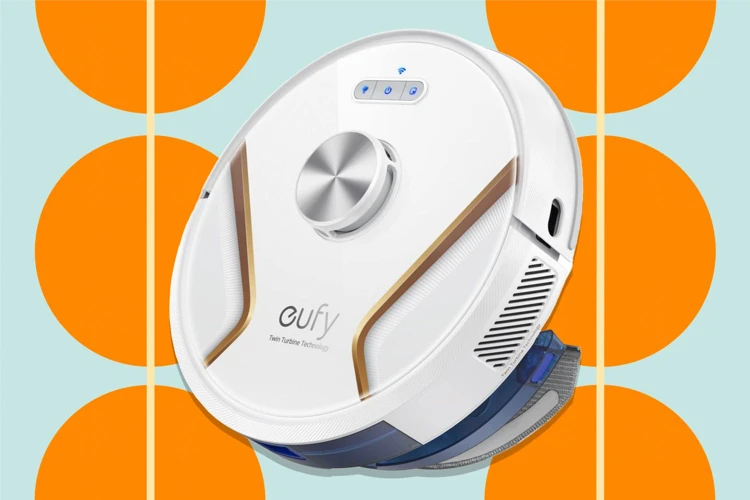
As we strive towards a future that is more technologically advanced and automated, vacuum cleaner charging technology continues to evolve. The most recent developments have revolutionized the way we think about vacuuming, making it more convenient, energy-efficient, and smarter than ever before. Whether you’re looking for a solution that requires minimal user intervention or one that runs on eco-friendly power sources, the latest advancements in vacuum cleaner charging technology offer a wide range of options to meet your needs. Let’s explore some of the most exciting advancements in this area!
1. Wireless Charging
Wireless charging is one of the latest advancements in vacuum cleaner charging technology. This innovative technology has gained popularity due to its convenience and easy-to-use features. With wireless charging, vacuum cleaners can charge without the need for cables or wires.
The Advantages of Wireless Charging
One of the primary advantages of wireless charging is its convenience. Users can charge their vacuum cleaners by simply placing them on a charging pad or dock. This eliminates the need to plug and unplug cables, making cleaning more efficient.
Additionally, wireless charging is safer than traditional charging methods. The absence of cables reduces the risk of electrical accidents, making it a safer option for households with children and pets.
Finally, wireless charging is a more aesthetically pleasing option. Vacuum cleaners can be charged discreetly inside cabinets or closets, without the need for bulky charging cables and docks.
The Latest Developments in Wireless Charging
Wireless charging technology has advanced significantly in recent years. One of the latest developments is the use of magnetic resonance charging. This method uses magnetic fields to transfer energy between the charging pad and the vacuum cleaner, allowing for faster charging times and longer battery life.
Another development in wireless charging is the ability to charge multiple devices simultaneously. This feature is particularly useful for households with multiple vacuum cleaners or other wireless charging devices.
Wireless charging is a convenient and safe technology that has revolutionized the way vacuum cleaners are charged. It is expected to continue to evolve and improve in the coming years, providing even more benefits to consumers.
Below is a table summarizing the benefits of wireless charging:
| Advantages | Description |
| Convenience | The ability to charge without cables or wires, making cleaning more efficient. |
| Safety | The absence of cables reduces the risk of electrical accidents. |
| Aesthetically pleasing | Vacuum cleaners can be charged discreetly without bulky cables and docks. |
| Fast charging | Magnetic resonance charging technology allows for faster charging times and longer battery life. |
| Ability to charge multiple devices | Useful for households with multiple vacuum cleaners or other wireless charging devices. |
2. Self-Charging Technology
One of the latest advancements in vacuum cleaner charging technology is the implementation of self-charging technology. With this technology, vacuum cleaners are equipped with sensors that detect when their battery level is running low. Once the battery level drops to a certain point, the vacuum cleaner will automatically return to its charging base to recharge.
Benefits of Self-Charging Technology:
- Convenience: With self-charging technology, users do not have to remember to charge their vacuum cleaners manually. The vacuum cleaner takes care of it all on its own, ensuring that it is always ready to go when needed.
- Time-Saving: This technology saves users valuable time that would otherwise be spent manually charging the vacuum cleaner. It allows users to focus on other tasks while the vacuum cleaner charges.
- Improved Efficiency: Self-charging technology ensures that the vacuum cleaner is always charged and ready to use. This eliminates downtime and ensures that the vacuum cleaner can complete the cleaning job in a timely and efficient manner.
- Longer Battery Life: The use of self-charging technology helps to extend the battery life of the vacuum cleaner. By keeping the battery charged and avoiding frequent deep discharges, the battery can last longer and perform better over time.
How Self-Charging Technology Works:
When the vacuum cleaner’s battery is running low, it uses a combination of sensors and mapping technology to locate the charging base. Once it has found the charging base, the vacuum cleaner will dock itself and begin recharging. Some models of vacuum cleaners even have the ability to resume cleaning from where they left off once the battery is fully charged.
This technology is especially beneficial for robotic vacuum cleaners, which are designed to operate autonomously. With self-charging technology, robotic vacuum cleaners can operate without human intervention, ensuring that the home is always kept clean and tidy.
Self-charging technology is a game-changer for the vacuum cleaner industry. It provides users with the convenience, efficiency, and improved battery life they need to keep their homes clean without having to worry about manual charging.
3. Intelligent Scheduling
The latest innovation in vacuum cleaner charging technology is intelligent scheduling, which allows the device to start cleaning on its own at pre-scheduled times. This advanced feature is particularly beneficial for busy homeowners who may not have the time to manually operate their vacuum cleaners on a regular basis.
Intelligent scheduling works by allowing users to set specific times for their robotic vacuum cleaner to operate. This means that the device will automatically start cleaning at the designated times, providing a hands-free cleaning experience that is both convenient and practical. With intelligent scheduling, users can program their vacuum cleaners to operate during specific times of the day or night when they are not at home, making it an ideal solution for those who want to maintain a clean and healthy environment without having to sacrifice their precious time.
The benefits of intelligent scheduling include:
- Efficiency: With intelligent scheduling, users can ensure that their vacuum cleaner operates at the most efficient times, such as during periods of low energy demand, in order to minimize energy consumption.
- Convenience: Intelligent scheduling eliminates the need for manual operation, which can be time-consuming and inconvenient.
- Flexibility: Users can set different schedules for different days of the week, making it easy to adapt to changing schedules and routines.
- Customization: The scheduling feature is completely customizable, which means users can adjust the settings to best suit their individual needs and preferences.
- Improved Cleaning: By scheduling the vacuum cleaner to operate at regular intervals, users can ensure that their homes are consistently clean, which is important for maintaining a healthy living environment.
Intelligent scheduling is just one of the many exciting advancements in vacuum cleaner charging technology that promises to make our lives easier and more efficient. As we continue to see innovation in this field, we can expect to see even more features that offer greater convenience, flexibility, and performance, ensuring that our cleaning needs are taken care of with ease and precision.
4. Auto-Docking and Self-Emptying
Auto-Docking and Self-Emptying
Another significant advancement in vacuum cleaner charging technology is the introduction of auto-docking and self-emptying capabilities. With this feature, the vacuum cleaner can dock itself to the charging station and recharge as needed. It can also empty the contents of its dustbin automatically, making it an ideal solution for people who are too busy to do it themselves.
This technology works by using sensors and mapping algorithms to detect the location of the charging station. Once the vacuum cleaner needs to recharge, it can automatically return to the charging station and connect itself for charging. When it comes to self-emptying, the vacuum cleaner empties its dustbin by docking itself onto the self-emptying station, which then disposes of the debris.
To better understand how this technology works, take a look at the following table:
| Feature | Details |
|---|---|
| Auto-Docking | The vacuum cleaner uses sensors to locate and dock itself onto the charging station when it needs to recharge. It can also map out the layout of the room to find its way back to the charging station. |
| Self-Emptying | The vacuum cleaner docks itself onto the self-emptying station, which then disposes of the contents of its dustbin. This can be either manual, where the user needs to replace the disposal bag, or more advanced, where the vacuum cleaner empties itself into a larger container, which only needs to be emptied occasionally. |
| Sensors and Mapping Algorithms | The vacuum cleaner uses a combination of sensors, cameras, and mapping algorithms to accurately locate the charging and self-emptying stations. It can also create maps of the room and navigate around obstacles to find its way back to the stations. |
| Benefits | Auto-docking and self-emptying features provide convenience and efficiency for busy households. By eliminating the need for manual charging and dustbin emptying, users can save valuable time and effort. |
Auto-docking and self-emptying technology represents a major step forward in vacuum cleaner charging technology. With the ability to locate and connect to charging and self-emptying stations automatically, vacuum cleaners can recharge and clean more efficiently than ever before.
5. Advanced Battery Management
Effective battery management is crucial for any device which uses a battery, and vacuum cleaners are no exception. The advanced battery management system in the latest vacuum cleaners is one of the most innovative features today. It ensures maximum battery life and performance, ensuring that your vacuum cleaner is always available when you need it.
Here are some of the features that make advanced battery management technology stand out:
| Feature | Description |
|---|---|
| Smart charging technology | The latest vacuum cleaners are equipped with smart charging technology that ensures the optimum amount of power is delivered to the battery without overcharging. This is important for maximizing battery life, and also ensures that the vacuum cleaner is always ready to use when you need it. |
| Battery capacity monitoring | Advanced battery management systems have the ability to monitor the capacity of the battery and adjust the cleaning intensity accordingly. This ensures that your vacuum cleaner is always operating at maximum efficiency, and that the battery is being used optimally. |
| Intelligent power management | The latest vacuum cleaners are equipped with intelligent power management technology, which optimizes the use of the battery to ensure maximum cleaning power while minimizing energy use. This helps to extend the battery life while also reducing your energy consumption. |
| Battery health monitoring | Advanced battery management systems are also equipped with battery health monitoring technology. This allows you to keep track of the battery health, so you can replace the battery before it causes any problems. |
| Efficient charging cycles | Advanced battery management systems ensure that the charging cycles are efficient and effective, to maximize the battery life. This means that the vacuum cleaner will charge quickly and efficiently, so it is ready to use when you need it. |
Advanced battery management is an essential feature for any modern vacuum cleaner. It ensures that the battery is always in good condition, and that your vacuum cleaner is always charged and ready to use. With its innovative features, advanced battery management technology has become a key player in the latest advancements in vacuum cleaner charging technology.
Future of Vacuum Cleaner Charging Technology
As technology continues to advance at a rapid pace, the future of vacuum cleaner charging technology looks brighter than ever. With new innovations and breakthroughs on the horizon, the next generation of vacuum cleaners is set to revolutionize the cleaning industry. From solar-powered charging to artificial intelligence and machine learning, the possibilities are endless. Let’s take a closer look at some of the exciting developments that are set to shape the future of vacuum cleaner charging technology.
1. Solar-Powered Charging
As we continue to focus on eco-friendliness and sustainability, solar-powered charging has become a popular alternative for vacuum cleaner charging. This innovative technology harnesses energy from the sun to power vacuum cleaners, eliminating the need for traditional electrical power sources.
Solar panels absorb sunlight and convert it into energy to charge the vacuum cleaner’s battery. The energy that is not used immediately is stored for later use. This not only saves energy costs, but also reduces carbon emissions, making it a great option for environmentally conscious individuals.
Although solar-powered charging is not yet widely implemented in vacuum cleaners, we can expect to see more manufacturers incorporating this technology in their products over time. It is a significant advancement in vacuum cleaner charging technology and one that has the potential to revolutionize the industry.
Here are some of the advantages of using solar-powered charging for vacuum cleaners:
| Advantages of Solar-Powered Charging |
|---|
| 1. Energy cost savings |
| 2. Reduced carbon emissions |
| 3. Eco-friendly and sustainable option |
| 4. Eliminates the need for traditional power sources |
| 5. Decreased dependence on electricity grids |
Implementing solar charging technology in vacuum cleaners is just one step toward creating more eco-friendly and sustainable solutions in the cleaning industry. It promises to be a game-changer for the industry, reducing energy costs and environmental impact, all while providing users with an efficient and reliable cleaning solution. With more improvements and advancements in the technology, we can look forward to a cleaner and greener future.
2. Multi-Camera Localization Technology
One of the most exciting advancements in vacuum cleaner charging technology is multi-camera localization technology. This technology involves equipping a vacuum cleaner with multiple cameras that enable it to sense and map out its surroundings, allowing for more precise navigation and cleaning. Here are some of the benefits of this type of technology:
- Accurate Mapping: Multi-camera localization technology allows for accurate mapping of a room, ensuring that the vacuum cleaner covers all areas equally.
- Efficient Cleaning: With this technology, vacuum cleaners can clean more efficiently by navigating through rooms using the fastest and most effective routes.
- Improved Safety: Multi-camera localization technology ensures that the vacuum cleaner operates safely by detecting and avoiding obstacles.
- Increased Autonomy: With this technology, vacuum cleaners can operate autonomously without the need for user intervention. They can even recharge themselves and continue cleaning when the battery is low.
Multi-camera localization technology represents a major leap forward in the world of vacuum cleaner charging technology. As this type of technology continues to develop, we can expect even more advanced features that will make our lives easier and our homes cleaner.
3. Robotic Vacuum Cleaners with Swappable Batteries
One of the latest advancements in vacuum cleaner charging technology is the development of robotic vacuum cleaners with swappable batteries. This technology makes it possible to have uninterrupted cleaning sessions as the vacuum cleaner can automatically change its batteries when they run low.
The robotic vacuum cleaners with swappable batteries rely on a modular design that allows users to quickly replace the battery with a fully charged one. This feature is particularly beneficial for large homes with multiple rooms that require extended cleaning time. It ensures that the vacuum cleaner can clean continuously without the need for the user to intervene and wait for the battery to recharge.
To ensure that the robotic vacuum cleaner has a decent run-time, manufacturers use high-capacity batteries that provide ample power to run the vacuum cleaner for a long time. For example, some models of robotic vacuum cleaners with swappable batteries incorporate lithium-ion batteries that can last for up to two hours of cleaning time.
Moreover, swappable batteries provide users with a cost-effective solution as they can easily replace old, worn-out batteries with new ones instead of buying a new vacuum cleaner, which saves users money and helps reduce electronic waste.
Manufacturers have made significant strides in making the swappable battery technology more user-friendly. For instance, some models feature a downloadable app that allows the user to keep track of the battery usage and signal when it is time to replace it.
Here is an example of the benefits and drawbacks of having the robotic vacuum cleaners with swappable batteries:
| Benefits | Drawbacks |
| Uninterrupted cleaning sessions | May require additional batteries to ensure longer cleaning times |
| Cost-effective solution over buying a new vacuum cleaner | May be expensive to purchase extra batteries |
| High-capacity batteries increase cleaning efficiency | Swapping the battery may take time |
| User-friendly interface and helpful features | Batteries require periodic replacement |
The emergence of robotic vacuum cleaners with swappable batteries is just one example of how technological advancements have transformed the vacuum cleaner industry. As companies continue to innovate, we can expect to see even more sophisticated vacuum cleaner charging technologies developed in the future.
4. Artificial Intelligence and Machine Learning
Artificial intelligence (AI) and machine learning are revolutionizing the world of vacuum cleaner charging technology. With smart sensors and algorithms, the vacuum cleaner can gauge the condition of the battery and adjust the charging process accordingly. This ensures that the battery gets charged optimally, without overcharging or undercharging, which can affect battery life.
Here are some key ways AI and machine learning are impacting vacuum cleaner charging technology:
- Smart Charging Technology: One of the key applications of AI and machine learning in vacuum cleaner charging is through smart charging technology. This technology enables the vacuum cleaner to analyze data from previous cleaning cycles, such as battery usage and cleaning time, to predict the battery’s condition and adjust the charging process automatically.
- Optimized Energy Management: AI and machine learning also help optimize energy management in vacuum cleaners. By analyzing data from multiple sensors, the vacuum cleaner can determine when and where to charge, optimizing energy use and reducing power consumption.
- Predictive Maintenance: AI and machine learning algorithms can also predict when the vacuum cleaner needs maintenance, such as replacing the battery, based on usage patterns and performance data. This ensures that the vacuum cleaner is always in top working condition, avoiding unforeseen breakdowns and costly repairs.
- Intelligent Scheduling: With machine learning, the vacuum cleaner can learn your cleaning habits and suggest the best time to start cleaning or charging, based on your schedule. This eliminates the need for manual input, making cleaning and charging more efficient and convenient.
- Advanced Navigation: AI and machine learning can also improve the navigation capabilities of robotic vacuum cleaners, ensuring that they avoid obstacles and navigate complex environments more efficiently. This helps to prolong battery life and ensure that the vacuum cleaner covers all areas that need to be cleaned.
The integration of AI and machine learning into vacuum cleaner charging technology is still in its early stages. However, the possibilities are endless, and there’s no doubt that these advancements will continue to transform the way we clean our homes. As we move towards a more connected future, vacuum cleaners will become smarter, more efficient and more effective, thanks to these innovative technologies.
Conclusion
In conclusion, it is clear that vacuum cleaner charging technology has come a long way in recent years. The latest advancements in this technology have significantly improved the user experience by providing faster charging, longer battery life, and more efficient use of energy. Additionally, minimal user intervention and smarter connectivity ensure that vacuum cleaners are more convenient and easier to use than ever before.
Wireless charging, self-charging technology, intelligent scheduling, auto-docking, self-emptying, and advanced battery management are among the latest developments that are already enhancing the performance of vacuum cleaners. However, the future of vacuum cleaner charging technology is even brighter.
The integration of solar-powered charging will give users access to cleaner and more environmentally friendly energy, while multi-camera localization technology will make navigation even more accurate. Furthermore, robotic vacuum cleaners with swappable batteries will provide a level of convenience that was once unimaginable, and the integration of artificial intelligence and machine learning will give vacuum cleaners the ability to adapt to users’ needs better than ever before.
Overall, it is an exciting time to be a part of the vacuum cleaning industry, and with even more innovative developments on the horizon, the future looks bright for users of vacuum cleaners.
Frequently Asked Questions
What is innovative charging technology for vacuum cleaners?
Innovative charging technology for vacuum cleaners refers to the latest advancements in battery charging technology. This includes wireless charging, self-charging technology, intelligent scheduling, advanced battery management, and more.
What are the advantages of innovative charging technology?
The advantages of innovative charging technology for vacuum cleaners include faster charging, longer battery life, more efficient use of energy, minimal user intervention, and smarter connectivity.
What is wireless charging for vacuum cleaners?
Wireless charging for vacuum cleaners is a technology that allows the vacuum cleaner to recharge without the need for a physical connection to the charging station. It works through the use of electromagnetic induction, which transfers power wirelessly from the charging station to the vacuum cleaner.
What is self-charging technology?
Self-charging technology for vacuum cleaners is a feature that allows the vacuum cleaner to automatically return to its charging station when its battery is running low. This feature minimizes the need for manual intervention and ensures that the vacuum cleaner is always ready to go when you need it.
What is intelligent scheduling technology for vacuum cleaners?
Intelligent scheduling technology for vacuum cleaners is a feature that allows you to set a schedule for your vacuum cleaner to clean your home automatically. This feature uses sensors and algorithms to create a cleaning schedule that is tailored to your home’s specific cleaning needs.
What is auto-docking and self-emptying technology for vacuum cleaners?
Auto-docking and self-emptying technology for vacuum cleaners is a feature that allows the vacuum cleaner to automatically return to its charging station and empty its dustbin. This feature minimizes the need for manual intervention and ensures that the vacuum cleaner is always ready to go when you need it.
What is advanced battery management technology for vacuum cleaners?
Advanced battery management technology for vacuum cleaners is a feature that optimizes the charging and discharging of the vacuum cleaner’s battery to extend its overall lifespan. This feature helps to ensure that the vacuum cleaner is always ready to go when you need it.
What is solar-powered charging for vacuum cleaners?
Solar-powered charging for vacuum cleaners is a technology that allows the vacuum cleaner to recharge using solar panels. This feature is eco-friendly and can help to reduce your home’s carbon footprint.
What is multi-camera localization technology for vacuum cleaners?
Multi-camera localization technology for vacuum cleaners is a feature that uses multiple cameras to map your home’s layout and track the vacuum cleaner’s location in real-time. This feature allows the vacuum cleaner to navigate more efficiently and avoid obstacles more effectively.
What is artificial intelligence and machine learning technology for vacuum cleaners?
Artificial intelligence and machine learning technology for vacuum cleaners is a feature that allows the vacuum cleaner to learn from its environment and adapt its cleaning behavior accordingly. This feature helps to optimize cleaning performance and minimize the need for manual intervention.

